 The remains of the Temple of Mithras discovered under central London’s Walbrook Square in 1954 has returned to its original location and it looks great, better than it has in 50+ years. The temple, first built around 240 A.D., was unearthed by archaeologists William Francis Grimes and Audrey Williams in the very last days of a two-year archaeological survey of the site before the construction of new office buildings. The temple was identified as a Mithraeum when the beautifully sculpted head of Mithras, complete with Phrygian cap, was found. A reporter happened to be there and took a picture. Mithras’ beauty caused a sensation and almost half a million people came to visit the excavation.
The remains of the Temple of Mithras discovered under central London’s Walbrook Square in 1954 has returned to its original location and it looks great, better than it has in 50+ years. The temple, first built around 240 A.D., was unearthed by archaeologists William Francis Grimes and Audrey Williams in the very last days of a two-year archaeological survey of the site before the construction of new office buildings. The temple was identified as a Mithraeum when the beautifully sculpted head of Mithras, complete with Phrygian cap, was found. A reporter happened to be there and took a picture. Mithras’ beauty caused a sensation and almost half a million people came to visit the excavation.
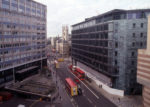 The ensuing public outcry forced the city to abandon its original plan — the demolition of the temple to make way for ugly concrete squares of cheap mid-century offices — and come up with a compromise solution. The excavation would be extended and once the archaeologists were done, the temple remains would be removed and reinstalled a few hundred feet away at ground level so the public could enjoy it. In 1962, plan B was completed and London’s Mithraeum was reconstructed on an empty patch of
The ensuing public outcry forced the city to abandon its original plan — the demolition of the temple to make way for ugly concrete squares of cheap mid-century offices — and come up with a compromise solution. The excavation would be extended and once the archaeologists were done, the temple remains would be removed and reinstalled a few hundred feet away at ground level so the public could enjoy it. In 1962, plan B was completed and London’s Mithraeum was reconstructed on an empty patch of 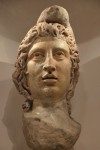 land on Victoria Street. The objects discovered would go the Museum of London, except for the incredibly rare surviving wood benches and joists from the temple’s original floor, preserved in the waterlogged soil where the lost Walbrook River had once coursed. They were thrown out like so much trash.
land on Victoria Street. The objects discovered would go the Museum of London, except for the incredibly rare surviving wood benches and joists from the temple’s original floor, preserved in the waterlogged soil where the lost Walbrook River had once coursed. They were thrown out like so much trash.
Unfortunately plan B was poorly executed. Modern concrete was used to patch up holes and build up some of the lost masonry. The temple was not installed in its original configuration and was basically unrecognizable compared to how it had looked in situ. Things did not improve as the city grew up around it, leaving it looking like a random, weird, squat rectangle of brick and mortar benches.
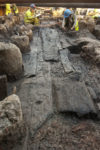 In 2010, the Walbrook Square site was bought by Bloomberg LP who planned to build a grand new European HQ there. Of course they knew about the potential for archaeological remains under the site, so an in depth survey was commissoned and this time the soggy muck of the lost Walbrook River turned in an even more spectacular feat of preservation. The excavation unearthed entire city streets, large slices of Roman London from its earliest days in 40 A.D. to the final withdrawal of Roman troops in the 5th century. Wood streets, wood walls, wood wells, a wood door, thousands and thousands of assorted objects made of leather, wood, textiles as well as metal and stone. The oldest dated writing ever found in Britain was discovered on one of hundreds of Roman wood tablets from the Bloomberg dig.
In 2010, the Walbrook Square site was bought by Bloomberg LP who planned to build a grand new European HQ there. Of course they knew about the potential for archaeological remains under the site, so an in depth survey was commissoned and this time the soggy muck of the lost Walbrook River turned in an even more spectacular feat of preservation. The excavation unearthed entire city streets, large slices of Roman London from its earliest days in 40 A.D. to the final withdrawal of Roman troops in the 5th century. Wood streets, wood walls, wood wells, a wood door, thousands and thousands of assorted objects made of leather, wood, textiles as well as metal and stone. The oldest dated writing ever found in Britain was discovered on one of hundreds of Roman wood tablets from the Bloomberg dig.
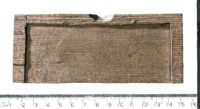
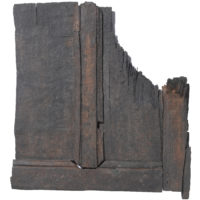
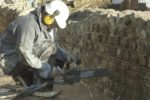 The Bloomberg coporation has far deeper pockets than the small potatoes real estate developers in 1954, so it made ambitious plans to include all of these archaeological marvels in an underground display space in the Bloomberg. Not only would Roman London’s many layers be viewable to the public, but it would foot the bill to rescue the poor, benighted reconstructed temple remains from their incongruous street-level location and overmortared neglect. The temple
The Bloomberg coporation has far deeper pockets than the small potatoes real estate developers in 1954, so it made ambitious plans to include all of these archaeological marvels in an underground display space in the Bloomberg. Not only would Roman London’s many layers be viewable to the public, but it would foot the bill to rescue the poor, benighted reconstructed temple remains from their incongruous street-level location and overmortared neglect. The temple 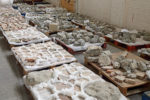 would return to its original location, dismantled, cleaned of modern interpolations and reinstalled in situ as it had once been. There it would have the chance to be seen in its proper context, safe from the elements, and would even be reunited with another piece of the temple that was discovered during the recent excavation.
would return to its original location, dismantled, cleaned of modern interpolations and reinstalled in situ as it had once been. There it would have the chance to be seen in its proper context, safe from the elements, and would even be reunited with another piece of the temple that was discovered during the recent excavation.
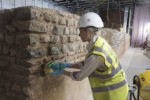 Tha planned opening date for the new Bloomberg building and its greatest of all basements was 2017, and right on schedule, the London Mithraeum at Bloomberg SPACE opens November 14th.
Tha planned opening date for the new Bloomberg building and its greatest of all basements was 2017, and right on schedule, the London Mithraeum at Bloomberg SPACE opens November 14th.
Michael Bloomberg, the founder of the company, said they were stewards of the ancient site and its artefacts. “London has a long history as a crossroads for culture and business, and we are building on that tradition.”
The Mithraeum incorporates a new daylit art gallery at ground level with an opening installation, Another View from Nowhen, by the Dublin artist Isabel Nolan. A huge glass case displays more than 600 of the 14,000 objects found on the site, including a wooden door, a hobnailed sandal, a tiny gladiator’s helmet carved in amber, and a wooden tablet with the oldest record of a financial transaction from Britain.
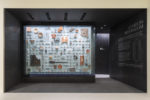 You can’t just walk in to see this archaeological treasure. Entrance is free of charge, but you must book first to guarantee entry. Click this link to book tickets, and have a poke around the website while you’re at it because it’s really very good. They worked hard to collect images and footage of the 1950s excavation and have incorporated them effectively on the site.
You can’t just walk in to see this archaeological treasure. Entrance is free of charge, but you must book first to guarantee entry. Click this link to book tickets, and have a poke around the website while you’re at it because it’s really very good. They worked hard to collect images and footage of the 1950s excavation and have incorporated them effectively on the site.

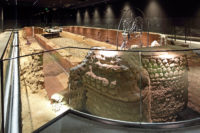
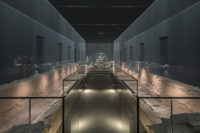
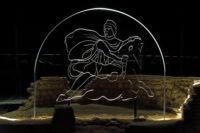
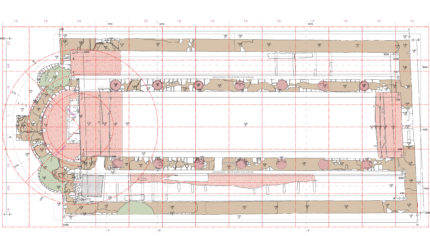
Libanius (Λιβάνιος), 314 – 392/3 AD, a “pagan Hellene”, put it like this in his letter to Emperor Theodosius I. (one of his 1545 letters):
—————-
“But those black-garbed people, who EAT MORE THAN ELEPHANTS, and demand A LARGE QUANTITY OF LIQUOR from the people who send them drink for their chantings, but who HIDE THEIR LUXURY by their PALE ARTIFICIAL countenances,—-these men, O Emperor, even whilst your law is in force, run to the temples, bringing with them wood, and stones, and iron, and when they have not these, hands and feet. Then follows a Mysian prey, the roofs are uncovered, walls are pulled down, images are carried off, and altars are overturned: the priests all the while must be silent upon pain of death. When they have destroyed one temple they run to another, and a third, and trophies are erected upon trophies: which are all contrary to your law. This is the practice in cities, but especially in the countries. And there are many enemies everywhere.”
—————-
Libanius, Oration 30: ‘For the temples’ (Pro templis), ed. 1830, pp.72-96. In some ‘Mithraea’, there were indeed human remains who apparently suffered violent deaths.
In the 1860s, a large number of human skulls was found in the bed of the Walbrook (Gallobroc) in central London, but seemingly those beheadings took place a few centuries earlier :skull:
It is good to see a few planks in the reconstruction.
Deep pockets and respect for the cultures of the past. A winning combination, Mr. Bloomberg. :hattip:
It seems to me that the least the City of London Museum could do is to display the head of Mithras, taken away to their collections, at the Bloomberg built display now! Let alone, the many other objects no doubt that they have from the temple site. To display, what appears to be a resin type replica as seen in the video of this post, seems wrong now that the temple has been so beautifully reinstalled on it’s original site. I understand the feeling that some may have that the Museum of London might allow more visitors to view these finds…but….it does seem that the more appropriate place now would be this fantastic new display, in the original, as such, context! Seems a small reward for Bloomberg’s level of patronage of the site for London. It’s not as if Bloomberg LS would own the items or have future control of them, I’m sure!
I assume this is the same Michael Bloomberg who was Mayor of NYC?
Yes it is.
Thank you for this, just an hour exploring Roman London! Makes me want to book a trip.